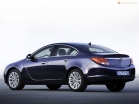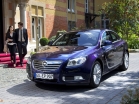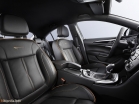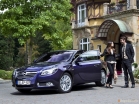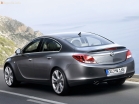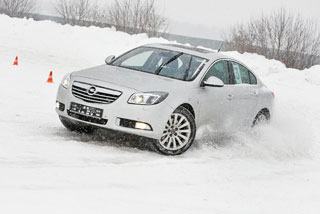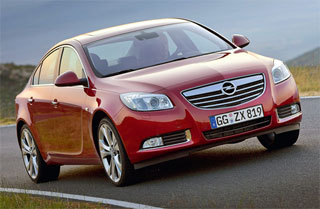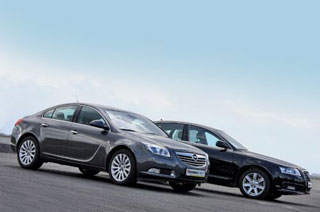Test drive Opel Insignia sedan since 2008 sedan
Re -intall
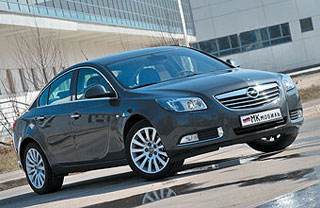 The life of a modern automaker today is akin to computer functioning
The life of a modern automaker today is akin to computer functioning Problem with a separate program (read the model)? Restone. We did not help change. But if software glitches are treated more or less painlessly, then global errors, especially systemic ones, lead at least to rigid rebooting, or even completely reinstalling the operating system. Opel seems to have followed the last way.
In general, the reinstallation of the system started, and the Germans began with the most age -old Vectra model. Over the past ten years, she has been redeemed more than once, no less globally updated ... In gratitude, she fought, conquering living space in the market. The third generation, but only to the restyling that had transformed it, was best in this field. At the same time, the rivals have rejuvenated and sent the old woman to live on the backyard. Not to say that the model’s things went very badly, but even for the past couple of years, all its main competitors ended the calendar year with a two-time advantage, and this despite the fact that the premium brands of the second echelon had already propped up from behind. In general, Opel approached the family model with a clear conscience. The story of Vectra ends on this. The model, which came to her, is called Insignia, and the Germans with her predecessor prefer not to compare this car.
Which is generally justified. The novelty is a completely different car. It is larger, more modern, more solid, but most importantly, things appeared in its specifications that Vectra owners could not even dream of: an adaptive suspension, tracking systems and road signs, all-wheel drive, updated interfaces and finally became available to Opel Smart owners. light. It is clear that most of these developments will mourn in a swamp of economic feasibility, but another thing is important here: Opel is not behind, its engineers also do this.
And in Rüsselheim, it turns out, they can draw. The self -sufficient Protestant conservatism of the third Vectra did not scold perhaps the lazy, especially when the Germans decided to embellish it, allegedly adjusting to the requirements of corporate style. They tried, but to explain how the headlights talked to a more or less original machine from Astra could make it more corporate, and could not.
In the case of Insignia, nothing needs to be explained: it is better, more original and brighter, and not only in comparison with the predecessor. May readers forgive us such seditious statements, but it is quite possible to put the novelty on a par with the extravagant VW Passat CC. It is no less elegant, dynamic and, most importantly, emotional. But emotions are something that Vectra was very missing, and what the majority of the current models of the company lacks.
In this case, you should not argue about the interior design. The heraldic aesthetics with slender rows of buttons have been packed and, we hope, is completely forgotten. The sedan's cockpit became interesting and more friendly. Moreover, not only visually. Matte wood, skin, textured polyurethane ... gorgeous. The Germans will approve, domestic buyers are most likely too. What is characteristic, at the same time, the notorious practice, which Vectra interiorists were so proud of, is no less here. Or maybe more. The central console is the same pile, but the driver now does not have to fight with climate settings and radio: they were divided into different panels.
And yet the Germans pierced. The InSignia wheelbase is only 37 mm longer than Vectra, which means that the changes are minimal in terms of passenger comfort. The front riders were offered new comfortable chairs, increased adjustments ... and rear? After all, they had the main problems. Now there are even more. The second row of the chairs of the predecessor for the three was narrow, there was not enough space for the legs, but it was possible to sit in it. In Insignia it is impossible: the roof presses on the heads strongly plowing (to please the external design). Even people of the average growth of the place between the front and rear rows are still a little here as before. In this regard, I want to ask: was it worth increasing (230 mm) the length of the body to let excess over the overhang? The only thing that can be explained by such wastefulness from a practical point of view, the need to increase the engineering space under the 2.8-liter V6 and an appropriate increase in the stem in the effort to preserve the stylistic symmetry. Moreover, only her, since the cargo capabilities of the sedan remained the same: the shelf in the face value, plus the opportunity to fold the rear sofa. Well, beauty requires sacrifice, and sometimes unreasonably high.
However, this is not the only thing that will have to sacrifice the owner of Insignia. For example, choosing a car with a machine gun, he will have to part with dreams of low taxes: only the already mentioned V6 and a 220-horsepower turbocharged motor can function with it. Everything below is equipped only with mechanics, so the test version (2.0 Turbo with 6-speed automatic transmission) will probably be quite popular with us.
However, there is no need to expect revelations from this tandem. This is not to say that the 220-horsepower four amazes with its grab, but the car with it accelerates quickly and evenly. The pluses include the sane fuel consumption and the decent elasticity of the unit. But among the minuses, a small turboyam and dabbled automatic transmission reactions. The first given, the second is easily corrected by the replacement of automatic transmission with mechanics. This, however, is fraught with a serious increase in fuel costs: it will be difficult to calmly travel to such an inSignia, especially when not only the motor has this, but the moderately of a hard and perfectly configured chassis. In general, an inexperienced driver will enjoy possessing this machine. However, the sophisticated is unlikely to choose it.
Competitors
New Leader?
For the past few years, Ford Mondeo has always been included in the five best-selling D-class cars in our country. However, this year he has a chance not only to move more popular competitors, but to completely get into the leaders. The reason is banal by the Russian assembly, thanks to which Ford was able to install an extremely attractive price tag on the model. Thus, the base equipment of Mondeo today is estimated at 671,000 rubles, while the basic value of the same single -platform Mazda6 is currently 811,000
rubles.
Made in Kaluga
The VW Passat is another representative of the family segment, who received a Russian residence permit, therefore, despite the relatively non -sides of the concern, Passat today remains quite affordable car. The cost of a sedan with a base 1.6-liter 102-horsepower engine starts from a mark of 743 200 rubles. However, for more than a decent 1.8 TSI (152 hp), you will have to pay 864,300 rubles, which is quite comparable with the price tags of the main competitors, including Opel, at least due to age and more modern design.
THE BEST
Toyota Avensis has been holding the lead in the class for several years. However, we are now talking about the old generation of a car, the sales of which lasted until recently. Today, dealers accept orders for the modern version. By the way, outwardly it is no worse than Opel, it is quite comparable to configuration and technology ... But under the hood of Japanese, a more powerful 1.8-liter engine is located, and this despite the fact that the cost of the basic versions (sedan) of these cars is almost the same (860,000 rubles in Toyota against 866 300 rubles for Opel).
Vladimir Zhidkov
Photo: Armen Meitarjan
Source: Mkobil magazine [April/2009]

